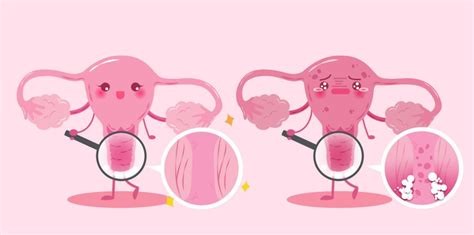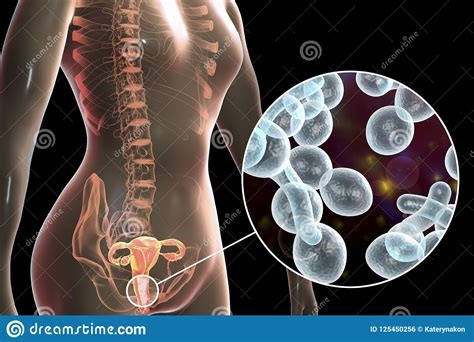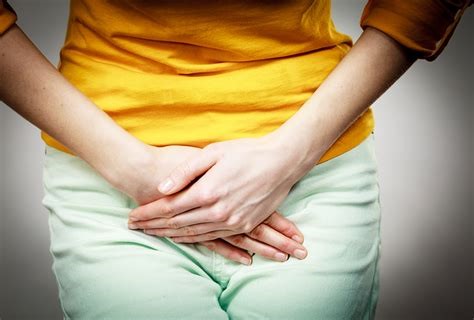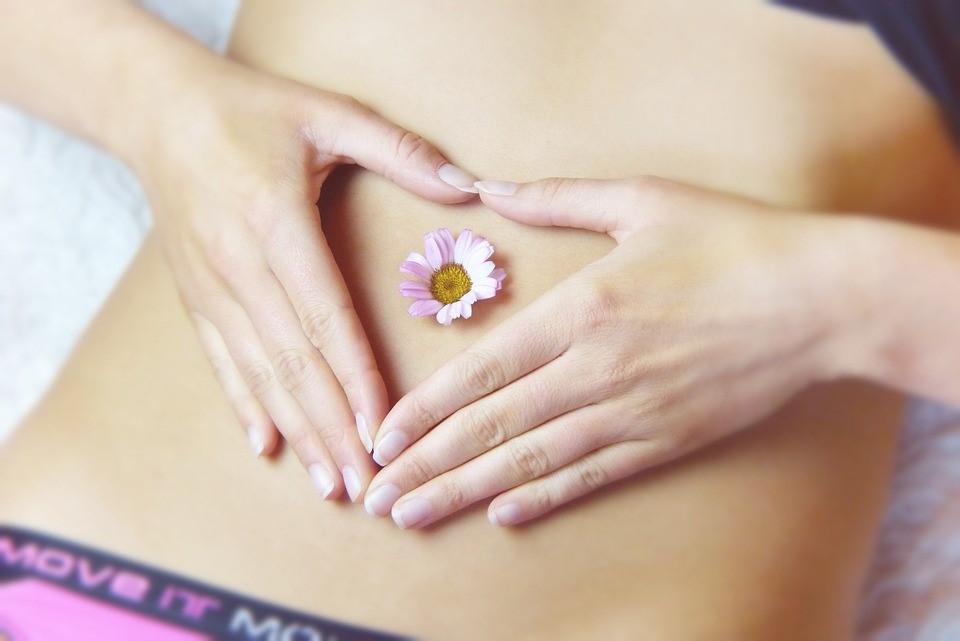Vaginal candidiasis – causes, symptoms and treatment
Vaginal candidiasis is a pathology that affects 3 out of 4 women at some point in their lives, causing the appearance of vaginal secretions with a modified appearance, vulvar itching and stinging when urinating.
Content
What are the factors that promote vaginal candidiasis?
Symptoms of vaginal candidiasis
Diagnosis of vaginal candidiasis
Treatment for vaginal candidiasis
How common is vaginal candidiasis?
When should I go for a specialist consultation?
What are the prevention methods of vaginal candidiasis
Vaginal candidiasis is a condition that affects 3 out of 4 women at some point in their lives, causing vaginal discharge with altered appearance, vulvar itching and dryness when urinating. Vaginal candidiasis is caused by different species of Candida, the most common yeast involved in the occurrence of this pathology being C. albicans, a fungal organism that is part of the commensal vaginal flora (normal flora). Under certain favourable conditions, Candida species can multiply, replacing the normal flora of the vagina by competing with them for nutrient resources.
Treatment for vaginal candidiasis is simple and effective, recommended by the specialist after a consultation and a set of tests. Vaginal candidiasis can cause patients to feel a great deal of discomfort, and the chronicity of this type of infection can lead to inflammation, pelvic pain, disturbed sexual dynamics and infertility in certain situations.
What is vaginal candidiasis?
Vaginal candidiasis is a fungal infection, whose etiological agent is frequently Candida albicans. The normal vaginal flora is made up of a series of non-pathogenic or facultatively pathogenic microorganisms (can cause specific diseases under certain conditions), including anaerobic bacteria (lactobacilli, peptostreptococci, anerobic cocci, Gardnerella vaginalis), certain types of Enterobacteriaceae, streptococci and Candida spp.
Candida is considered an opportunistic yeast that causes pathologies with specific clinical manifestation only under favourable conditions, represented by the occurrence of imbalances of the vaginal flora or decreased immune system defence capacity secondary to seasonal viral infections, HIV, immunosuppression associated with haematological diseases or antibiotic treatments.
The virulence of Candida strains involved in the occurrence of vaginal fungal infections is provided by the ability of yeasts to adhere to the surface of the vaginal mucosa and to damage it by means of the enzyme machinery represented by hydrolases. The ability of yeasts to synthesize extracellular polymeric substances enables them to organize themselves as biofilms on the surface of the vaginal mucosa, thus acquiring increased resistance to common antifungal treatments.
The main candida species involved in the occurrence of vaginal candidiasis are C.albicans, C.tropicalis, C.glabrata, C.kefyr and C.parapsilosis.
Vaginal candidiasis can occur at any age, but is more common in sexually active people, especially those who have unprotected intimate relations. Vaginal candidiasis is not a sexually transmitted disease, but the aetiological agent that causes it can be contracted during unprotected intimate vaginal or oral sex with an infected partner.

What are the factors that promote vaginal candidiasis?
In addition to immunological risk factors involved in the development of vaginal candidiasis, fungal infections of the female genital system can be favoured by:
- Increased serum blood glucose levels: female patients with diabetes have consistently high blood glucose levels, which favour fungal colonisation of both the mucous membranes (oral, vaginal, urethral) and the surface of the integument;
- Female-specific hormonal fluctuations and those associated with pregnancy favour the appearance of imbalances in the vaginal flora with the multiplication of candida;
- Unbalanced diets, excessive alcohol consumption, avitaminosis (vitamin A, B6, B12 and vitamin C deficiency), microelement deficiency (selenium, zinc, iron);
- The use of internal tampons during menstruation or of absorbents with a high content of plastic and chemicals favours the appearance of imbalances in the normal vaginal flora with the appearance of candidiasis;
- Use of underwear made of synthetic materials;
- Frequent vaginal douching, which destroys the commensal flora that protects against fungal and bacterial infections;
- Use of scented feminine products (sprays, intimate lotions, creams).
Symptoms of vaginal candidiasis
The main symptoms that make up the evolving clinical picture of vaginal candidiasis are:
- Vulvar and vaginal itching;
- Vulvar erythema (reddening of the vulva);
- Burning sensation during sexual contact;
- Urinary blistering;
- Vaginal pain (spontaneous or during sexual contact);
- Vaginal discharge with a white, white, stringy appearance.
- The intensity of the symptoms caused by this type of vaginal infection may vary from case to case depending on the severity of the candidiasis, the duration of its evolution and the associated complications. Chronic vaginal candidiasis can be complicated by the appearance of damage to the internal female genital organs (uterus, fallopian tubes) manifested by inflammation and pelvic algic syndrome.
However, there are situations in which vaginal candidiasis evolves asymptomatically, the etiological agent of this pathology being discovered by chance through routine investigations recommended by the gynaecologist.
Diagnosis of vaginal candidiasis

The diagnosis of vaginal candidiasis is established by the gynaecologist on the basis of the information obtained from the patient’s history, clinical examination and laboratory investigations. Microscopic examination of the smear obtained by examination of vaginal secretions and culture of vaginal secretions are the main types of investigations used to identify the Candida species involved in the occurrence of vaginal yeast infections.
In addition to its diagnostic role, bacteriological examination of vaginal secretion culture guides the therapeutic management of vaginal candidiasis by means of antifungigram which provides information on the susceptibility of the germ to different classes of fungicides.
Treatment for vaginal candidiasis
Treatment for vaginal candidiasis is prescribed by the gynaecologist according to the sensitivity of the candida to the antifungals tested in the antifungals and frequently involves the administration of nystatin or azoles (clotrimazole, fluconazole, itraconazole, miconazole, ketoconazole) as topical or systemic treatment.
The method of administration of antifungals is recommended by the doctor according to the extent of the fungal infection, the severity of symptoms, the patient’s tolerance and the existence of any evolving pregnancy. Oral antifungals are contraindicated during pregnancy, and can be replaced by ovules and vaginal topicals.
Oral antifungal treatment for vaginal candidiasis may be more difficult for patients to accept, as in some cases it causes unpleasant side effects such as nausea and vomiting, loss of appetite and abdominal pain. Ointments and ointments with antifungals are easier to tolerate, as these types of preparations are rarely associated with mild local stinging after application.
Dosage and duration of treatment should be followed according to the doctor’s instructions to avoid recurrence of vaginal candidiasis. After completion of the treatment it is recommended to take a culture of the vaginal secretion to confirm the therapeutic effect of the antifungals and, if necessary, to continue with the administration of ova to restore the vaginal flora.
There is also the possibility that the fungal infection is resistant to treatment, so sometimes other types of medication are recommended, depending on the specifics, severity of the condition and the overlap of vaginal candidiasis over an evolving pregnancy.
When fungal infections are frequently present, the specialist may recommend treating the couple’s partner at the same time and maintaining protected intimate relations until the pathogen has been eradicated. In patients in whom conventional antifungal treatments are not effective or in those with recurrent episodes of vaginal infection caused by Candida spp., the gynaecologist may recommend the use of boric acid in the form of vaginal capsules.
How common is vaginal candidiasis?

Studies to date show that vaginal yeast infections affect more than 75% of women, resulting in at least 2 episodes of vaginal candidiasis in a lifetime. In 5% to 8% of these cases, candidiasis is recurrent and favours the occurrence of at least 4 episodes of vaginal candidiasis per year. After bacterial infections, vaginal candidiasis is the second most common intimate pathology in females.
Females younger than 40 have a higher risk of developing an episode of vaginal candidiasis compared to those before puberty or at menopause. This is due to sexual activity and monthly hormonal fluctuations that influence the vaginal lining.
The high levels of oestrogen specific to the reproductive period induce hypertrophy of the vaginal mucosa and intensify the secretion of glycogen by specialised cells located at this level. The fermentation of glycogen by lactobacilli and its transformation into lactic acid leads to a drop in vaginal pH, which in certain situations favours the exacerbated development of yeasts with the appearance of the specific manifestations of vulvovaginal candidiasis.
When should I go for a specialist consultation?
A specialist consultation for the diagnosis of vaginal candidiasis is recommended when the patient notices symptoms such as vaginal itching and dryness when urinating, two of the most common symptoms of this condition. Chronic pelvic pain, dipareunia (pain during sexual intercourse) and fertility disorders require specialist investigations to identify the cause of their occurrence, because in some situations, these manifestations may be favoured by the spread of vaginal candidiasis to the uterus and fallopian tubes.
What are the prevention methods of vaginal candidiasis
To reduce the risk of developing vaginal candidiasis, it is recommended to follow a set of measures that include:
- Replacing synthetic underwear with cotton items that absorb moisture and prevent the overgrowth of vaginal candidiasis;
- Regularly changing pads and tampons whenever necessary and especially after swimming in the bath;
- Avoiding hot baths;
- Avoiding vaginal douching, which can affect the flora in the vagina;
- Cautiously administering antibiotic treatments and combining them with antifungal drugs to reduce the risk of candidiasis.
Find out more:
Immunity in vaginal candidiasis – https://journals.lww.com/co-infectiousdiseases/Abstract/2005/04000/Immunity_in_vaginal_candidiasis.5.aspx
Effects of reproductive hormones on experimental vaginal candidiasis – https://iai.asm.org/content/68/2/651.short
History and update on host defense against vaginal candidiasis – https://onlinelibrary.wiley.com/doi/abs/10.1111/j.1600-0897.2006.00450.x

